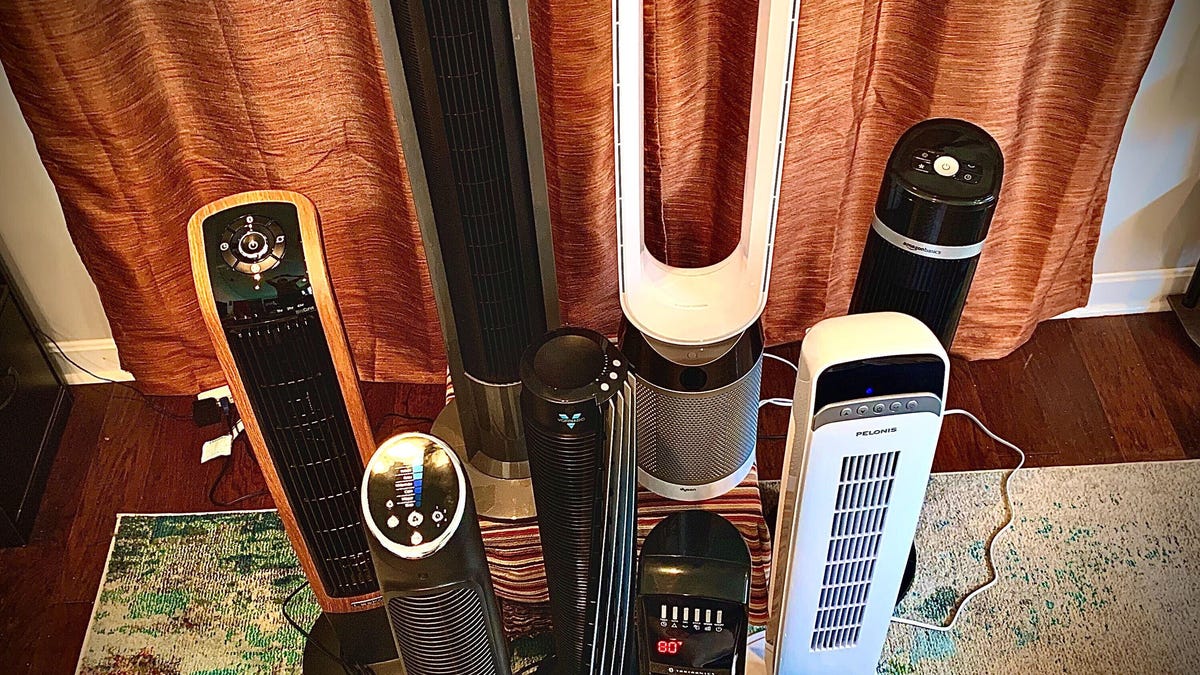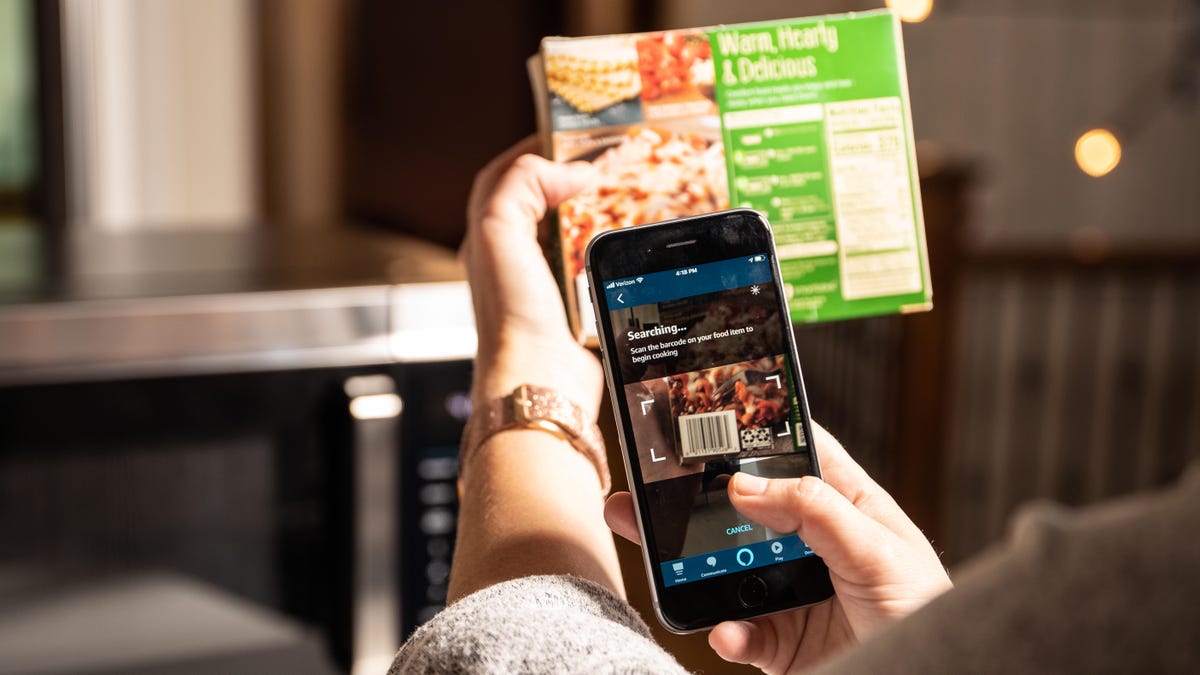Forget hurricanes, floods or fires — according to data from the National Weather Service, heat waves kill far more people than floods, tornados, winter storms and other types of weather disasters. The human body can’t easily withstand prolonged high temperatures, and our houses don’t like it much, either. Add common health conditions like asthma, and heat waves can quickly turn fatal for many sufferers.
Common heat wave advice includes staying indoors, keeping the air conditioner set to a healthy level, staying hydrated and using cool water to alleviate symptoms. But for smart homes and home security, there are additional steps you can take to prepare for an awful heat wave and keep loved ones protected. Start with these tips.
1. Use a portable air conditioner and monitor room temperature carefully
Whole house air conditioners remain very important in heat waves, especially when combined with other cooling methods. But not all homes have whole house AC, and in severe heat waves they may not be enough. Another option is a smart portable air conditioner that you can plug in and move from room to room, depending on where you’re spending time.
Take a look at our list of the top portable air conditioners, and you’ll find models with remotes, voice assistant support, timers, dehumidifier functions and much more. Expect to spend around $400 for a good model that you can use for summers to come.
Important note: Once temperatures start rising well above 90 degrees Fahrenheit, basic ceiling fans don’t really make a difference, especially when addressing health issues. It’s important to focus more on home insulation and air conditioning.
In many homes, some rooms can get much hotter than others, which doesn’t really help central thermostats do their job. Consider home monitoring devices that can sense temperature, like these all-in-one Arlo security sensors we tested. That way you can constantly monitoring the temperature in a particular spot (sitting room, bedroom, baby’s room, etc.) and take action if it gets too high.
Arlo sensors can do nearly anything and are easy to move whenever you want.
2. Set a strict curtain schedule for your windows
Sunlight streaming through your windows can heat up objects and air inside your home, making a heat wave worse. Close your blinds completely during the hottest temperatures for better protection. You can also search for smart blinds and curtain retrofits to let you set automatic schedules to make this process easier.
Once the outside temperature drops significantly below indoor temps, your insulation starts working against you. So, if your region experiences cooler nights, wait for the temperature difference and open windows around your home to create cool air flow.
3. Replace your HVAC filter and order an inspection
To prepare for a heat wave, you’ll want to replace your home HVAC filter, which is typically located right at the fan system that pushes air around your house. It’s a good idea to keep several properly sized filters nearby so you can switch them out a couple of times a year, or when you really need efficient airflow.
If you have time, you should also schedule a maintenance visit from a professional HVAC contractor. Among other things, they can test the refrigerant levels in your AC system. Refrigerant can leak out over time and make your air conditioning less efficient. Making sure you have the proper levels is important ahead of a hot period.
Read more: HVAC Maintenance Guide: What to DIY and When to Call a Pro
Kangaroo includes a climate sensor, aka leak detector, in its expanded eight-piece home monitoring kit.
4. Install leak detectors and monitor for leaks
Home leaks are often associated with freezing temperatures when pipes crack in the dead of winter. But heat waves can cause an opposite, yet similar, problem: Pipes can expand and damage their valves and other components, which also leads to leaks. Also, AC units can go into overdrive and may leak more than usual in your basement or garage.
Most home security systems, like Abode, offer leak detector add-ons that you can place in susceptible areas to get alerts or alarms when water on the floor is detected. You can also find standalone units from Eufy and other brands.
5. Keep your outdoor home devices out of direct sunlight
Shade is your friend when placing outdoor electrics like home security cameras or outside sensors — even robot lawnmowers. High temps can wreak havoc on batteries, make sensitive electronics overheat and may even cause plastics to melt.
So when the temperature start shooting up, bring your electronics inside or into the shade until the hot spell is over. And please watch where you install your home cameras.
Cutting down on drafts helps keep the cool air inside.
6. Check and replace your weather stripping
Weather stripping refers to those small strips of felt and rubber at the edges of windows and doors. They play a vital role in home insulation: When they wear down or get ripped off, the gaps notoriously cause drafts. That’s unpleasant in wintertime, but during a heat wave it can sap all the cool air that your AC has created, keeping your home from cooling down fully and increasing the risk of heat-related health problems.
Prep for heat waves by checking weatherstripping and blocking any drafts from worn materials. You can find weather stripping yourself for a DIY project, but it’s important to get the right kind to match your doors and windows.
7. Find cooler alternatives for cooking
Cooking and baking produce a lot of heat in the kitchen, so you may want to reduce those activities during a heat wave. That’s why we have an entire guide on how to keep your kitchen cool when temperatures rise, including prepping meals beforehand or cooking late in the evening. Also, this may be a great time to check out meal delivery services.
Read more: Don’t Turn Your Oven on During a Heat Wave. Do This Instead
Keep kitchens calm and cool during a heat wave.
8. Search for electronics to unplug and stop using
Large electronics can produce a lot of background heat even when they’re in standby mode. When the heat gets really bad, try unplugging larger electronics entirely. That can include A/V receivers, game consoles, desktop computers and televisions — depending on what you plan to use that day.
On that note, refrain from running heat-producing appliances like dishwashers and dryers, or at least wait until nighttime when temperature drops.
Read more: Heat Wave: Keep Your Phone From Overheating in Record Temps
9. Replace your lighting with smart lights
There’s one other surprising part of the home that produces a lot of heat — your incandescent lights, which are terribly inefficient at using energy (touch one to find out). Newer LEDs (light-emitting diodes) found in smart lights create almost no heat and tend to last much longer.
The key is finding high-quality, affordable smart lights, which is why you should head over to our list of the best smart lights available. Switch out those sweaty lights with LEDs and your house will start feeling cooler.
Alexa Emergency Assist replaced Alexa Guard.
10. Create easy access to emergency medical services
If it looks like someone is suffering from heatstroke or a similar condition, it’s important to get medical attention immediately to help them out. Signs include lots of sweating accompanied by headache, nausea and disorientation. If someone shows problems like these, get them in a cool spot and contact emergency services. You can also bathe their feet in cool water to help them get relief.
Some home security plans can make this easier. The Alexa Emergency Assist plan ($6 per month) is a good option, since it works with existing Alexa speakers and lets you immediately call for help and notify family emergency contacts with a command. That can be especially important for elderly relatives who may live alone and are more susceptible to heat-related conditions.
For more temperature management choices, visit our guide to the best smart thermostats and look at the top DIY security monitoring systems. It’s also a good idea to brush up on heatstroke safety and how to stay safe when air quality is really bad.





